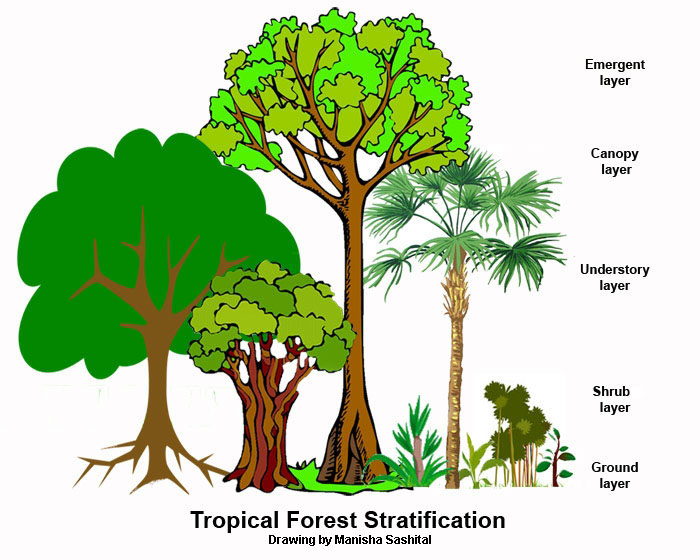An Electronic Botanical Glossary
Posted in Science on January 11 2013, by Scott Mori
Scott A. Mori has been studying New World rain forests for The New York Botanical Garden for over 35 years. He has witnessed an unrelenting reduction in the extent of the tropical forests he studies and as a result has become interested in the ecosystem services provided by them.
Manisha Sashital, a student in Environmental Engineering at Carnegie Mellon University, worked on a botanical glossary under the supervision of Dr. Mori as an intern at the Garden this past summer.
 Just like languages, the sciences have vocabularies that must be mastered before their literature can be understood. Without understanding vocabulary, one cannot speak or write a language—just like one can not understand the morphology and anatomy of plants; their ecological relationships with other plants and animals; and their interactions with the environment in which they live without understanding the terms that describe the features of plants and their interactions. Learning the terminology of Botany is frustrating to beginners and experienced botanists alike because the vocabulary is vast, there are many synonyms for the same terms, and terms are a combination of Latin, Greek, and English words. There are numerous botanical glossaries available, for example the classics: A Glossary of Botanical Terms by B. D. Jackson and Botanical Latin by William T. Stern, and too many others to mention in this blog. Why then is there a need for another glossary?
Just like languages, the sciences have vocabularies that must be mastered before their literature can be understood. Without understanding vocabulary, one cannot speak or write a language—just like one can not understand the morphology and anatomy of plants; their ecological relationships with other plants and animals; and their interactions with the environment in which they live without understanding the terms that describe the features of plants and their interactions. Learning the terminology of Botany is frustrating to beginners and experienced botanists alike because the vocabulary is vast, there are many synonyms for the same terms, and terms are a combination of Latin, Greek, and English words. There are numerous botanical glossaries available, for example the classics: A Glossary of Botanical Terms by B. D. Jackson and Botanical Latin by William T. Stern, and too many others to mention in this blog. Why then is there a need for another glossary?
The answer is that electronic glossaries provide those with an interest in botany access to more information than hard copy publications. For example, electronic glossaries can be illustrated with more images than hard copy publications because of the high costs of printing, especially of images in color, and they can be immediately corrected when a mistake is brought to the attention of the authors. Electronic glossaries are instantaneously available to anyone with a connection to the internet, and links can be made to definitions of other terms related to a particular term under consideration. In addition, electronic glossaries can be attached to electronic keys to break down complex terminology used to identify unknown plants; for example, if a choice in a key asks if the ovary of a flower is superior or inferior, a link can be provided to these terms in a glossary where they are defined and illustrated.
Another help in keying out unknown plants with electronic keys is the ability to consult links to descriptions and images of plant families, genera, and species, so that the user of the key can get an idea if an unknown plant has been keyed out correctly. In short, terms in electronic glossaries can be attached to any electronic medium to clarify terms that are used to describe and understand the relationships of plants.

The definitions have been made easier to understand because of the beautifully executed illustrations of Bobbi Angell and Manisha Sashital, as well as the stunning photographs of Carol Gracie. The glossary can be accessed directly or indirectly from the home page of the Virtual Herbarium of The New York Botanical Garden, where you can then scroll down to “Resources” and click on “Glossary for Vascular Plants.” The latter route will introduce you to other resources available from the NYBG Herbarium.
We have a long way to go to make our glossary as good as it can be. There are still many missing terms, and there are typos and mistakes that have not yet been discovered. We hope that you will use this glossary and help us make it the best it can be by suggesting new terms that should be added and corrections that should be made.


What wonderful news – an Internet Glossary of Botanical information! Please tell the staff that worked on this project, how appreciative the public will be for this great bounty of knowledge and beauty. This is exciting and will prove to be informative and a delight. ‘THANK YOU’ so verrrrrry much.